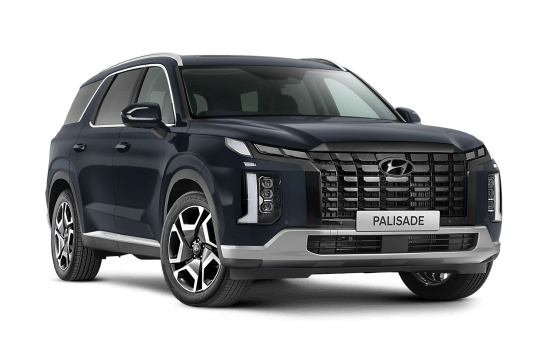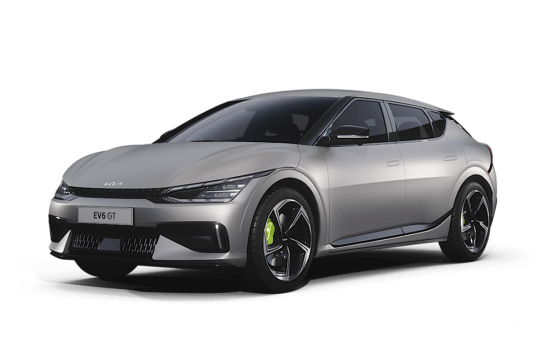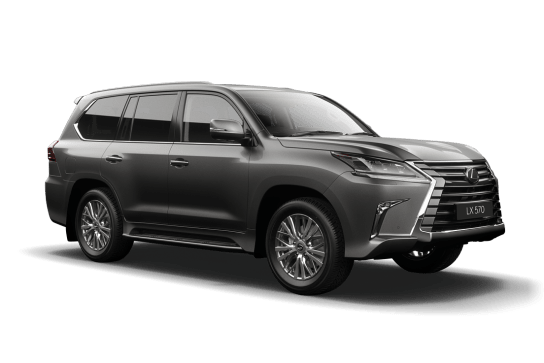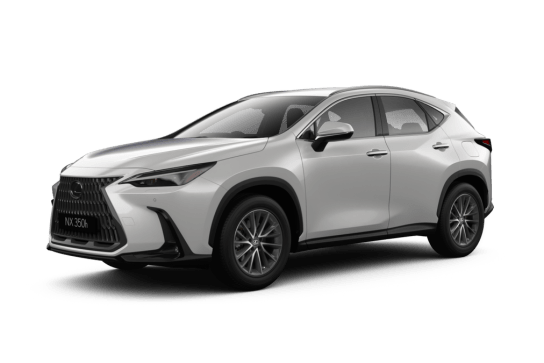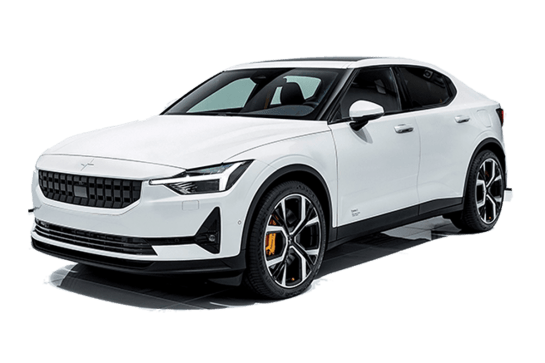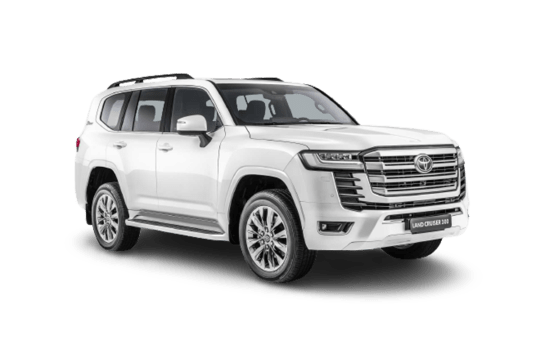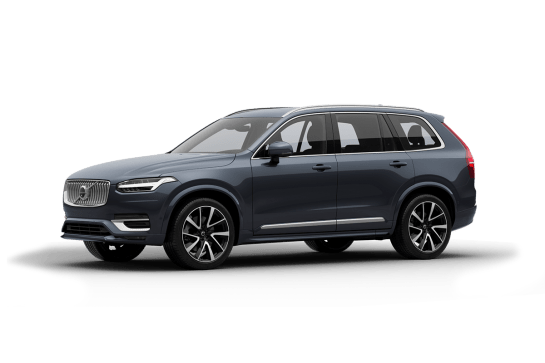
Lexus RX VS Mazda CX-60
Lexus RX
Likes
Dislikes
Mazda CX-60
Likes
- Quality feel
- Spacious and practical interior
- Superb powertrain and handling capabilities
Dislikes
- Some suspension noise intrusion
- Oddly dated styling inside and out
- Still a premium-priced Mazda
Summary
Lexus RX
For those of us unlucky enough to remember the first Lexus RX to launch in Australia, the memories aren’t the fondest.
If you can’t remember it, just picture the stodgiest-looking SUV you can - make it so bland a mere picture of one could cure insomnia - dragging a glass-walled cube behind the rear wheels.
All of which makes the current-generation RX so incredible. I mean, just look at it; those big rims, the 3D-effect grille, the outrageous lines and creases. It’s about as far removed from its snooze-worthy predecessors as it is possible to get.
Little wonder, then, it has emerged as the second-strongest performer in the Lexus line-up. And with the RX recently refreshed (and with a seven-seat RX L model added for the first time) its high time we took a closer look at the Japanese premium brand’s large SUV.
Read More: Lexus RX 450h 2018 review: snapshot
Read More: Lexus RX 450hL 2018 review: snapshot
Read More: Lexus RX 350 2018 review: snapshot
Read More: Lexus RX 300 2018 review: snapshot
| Safety rating | |
|---|---|
| Engine Type | 3.5L |
| Fuel Type | Premium Unleaded Petrol |
| Fuel Efficiency | 9.6L/100km |
| Seating | 5 seats |
Mazda CX-60
A good car in its own right, the Mazda CX-60 has nevertheless been one of the most disappointing new-model releases of recent times.
After the ongoing critical and commercial success of the CX-5, its somewhat larger premium mid-sized sibling should have been a slam dunk, with BMW-evoking longitudinal drivetrain and terrific in-line six-cylinder engine choices, as well as the surprisingly far-sighted option of a plug-in hybrid electric vehicle (PHEV) from the get-go.
Yet, when launched internationally during 2022, the quality, packaging and performance were overshadowed by high prices, a jarring ride, odd handling and erratic transmission calibration, particularly in the aforementioned PHEV.
Read more about
- Mazda powers up: Japanese brand joins forces with world's biggest electric car battery maker to build new EVs
- Has Mazda just filed a patent that will end the MX-5? It sure has | Opinion
- Mazda's grand China plans: Billions in investments flagged for new hybrid and electric cars in world's largest EV market, so where does that leave Australia?
Now there’s been a wholesale re-think surrounding all of the CX-60’s objectionable systems, as well as a new, lower priced grade, among other updates.
Is it the SUV Mazda should have launched in the first place? Let’s find out.
| Safety rating | |
|---|---|
| Engine Type | 3.3L turbo |
| Fuel Type | — |
| Fuel Efficiency | 7.4L/100km |
| Seating | 5 seats |
Verdict
Lexus RX7.9/10
A comfortable and ferociously well-equipped offering (even from the cheapest trim level) - and with a very good ownership package to boot - the RX has earned its place high in the Lexus pecking order.
There are faster, more pulse-quickening SUVs available, of course, but as a sedate suburban warrior, the RX is hard to fault. For ours, we'd be opting for the bang-for-bucks sweet spot of the Luxury trim, paired with the punchy-but-efficient hybrid powertrain.
Mazda CX-608.1/10
Have no doubts. The MY25 version of the CX-60 is the SUV that Mazda should have launched in Australia in 2023.
It fulfils the promise of its sophisticated specification, builds on the extensive dynamic abilities of previous models, and now provides a compelling – and unique – choice for medium-SUV buyers who do not need an extended seven-seater.
It may still looks a bit daggy from some angles outside, and we’d like a little bit less suspension noise on the inside, but the CX-60 should now be on Australian family-car shortlists.
Note: CarsGuide attended this event as a guest of the manufacturer, with accommodation and meals provided.
Design
Lexus RX
This current RX is like the butterfly that’s emerged from the caterpillar-cocoon of the older models, looking plenty premium and serving up road presence by the bagful.
No matter which model you go for, you’ll find the angry 'Spindle Grille' up front (which, for ours, is reminiscent of the Predator’s toothy grin, while 20-inch alloys are an impressive size, and a very un-Lexus body kit wraps from the front end all the way around to the rear spoiler.
The interior (check out the interior photos for a closer look) is premium-feeling, if a little busy, with the doors and dash covered in a combination of soft-touch materials and padded leather.
The brushed aluminium-look central tunnel that separates the front seats is super wide, as it houses the cupholders, drive-mode selector and the strange mousepad that controls the entertainment system, but feels nice under the touch and becomes a kind of focal point in the cabin.
Mazda CX-60
If you’re searching for something new in the looks department for the CX-60, you won’t find it, since this is essentially the same car as last year’s model from the outside. Except there’s a new beige colour option.
Which means the same long-bonnet/cab-backward silhouette remains, along with the corporate wing-motif grille, hunched-over styling (that looks awkward from some angles) and short rear overhangs.
Still, the overall effect remains modern, clean and distinct from the nearly-identical and very closely-related CX-70, CX-80 and CX-90 further up the Mazda food chain.
Note that the CX-60 is usefully larger than the CX-5, with the former coming in at 4740mm long, 1890mm wide, 1675mm tall and 2870mm in wheelbase length, compared to the latter’s 4575mm, 1845mm, 1680mm and 2700mm dimensions respectively.
Which, of course, elevates it from an interior point of view.
Practicality
Lexus RX
With dimensions stretching 4890mm long and 1895mm wide, the RX sits squarely in the large SUV category, and there’s plenty of space for riders in both the first and second row.
Up front, there is a cup holder for both driver and passenger and extendable pockets in each of the front doors, and the deep cubby that separates the front seats adds plenty of storage space, and is home to two USB connections, a power outlet and and aux connection, but there is no sunglass holder.
The interior dimensions ensure there’s plenty of space in the back seat, although the central stack that houses the air vents and another power outlet does jut out into the rear legroom of the middle-seat passenger. There are two bonus cupholders hidden in a pulldown divider that drops from the middle seat, and two ISOFIX attachment points along the backseat.
Open the automatic tailgate (by waving your hand in front of the Lexus badge) and you’ll find 453 litres of luggage capacity, with boot space increasing to 942 litres by folding the backseat down. Theres’s a sliding cargo cover (the SUV version of a tonneau cover), too.
Mazda CX-60
Like the exterior, the changes for the MY25 CX-60 are pretty much under the skin, with improved noise/vibration and harshness-quelling measures to quieten things down more.
And an exhaust-sound enhancer through the audio system to liven things up if you desire.
Representing the aforementioned $10K saving over the previous entry-level Evolve, the Pure does possess less opulent trim and (nice) cloth seat fabrics, but otherwise the CX-60 does present a larger-than-usual cabin environment compared to smaller medium-sized SUVs.
But fans of big, showy screens may be underwhelmed.
The dash is elegant but somewhat old-fashioned, especially compared to, say, the latest BMW X3’s dazzling displays. It feels like a hangover from last decade’s CX-9.
Yet there’s no denying how satisfyingly easy and logical most of it is, from the super-clear, electronic instrumentation to the simple and effective climate control layout, while the iDrive-style rotary controller means less time with eyes off the road. Safe, intuitive ergonomics. Thank you, Mazda.
Additionally, there’s a quality solidness to the fit and finish that elevates the social-climbing Mazda beyond what a CX-5 could achieve.
All the essentials are also well thought out, from storage and vision out to ventilation and, not least of all, space and seat support, especially when sat on over long distances.
That also carries over to the expansive back-seat environment, with air vents, USB ports, lighting, cupholders and grab handles. The CX-60 is an SUV that a family could grow into without it feeling excessive.
Is this ‘big-medium’ or ‘small-large’ sized?
From the boot’s perspective, either fits, and is one of the reasons why you might consider stepping up to a CX-60. The floor is low, wide, flat and easy to load, as well as beautifully finished.
The 40/20/40 split fold backrests can be folded remotely via Mazda’s Karakuri function, boosting capacity from 477 litres (VDA) to 1726L, while the in-line six-cylinder models have a space-saver spare wheel underneath, leaving PHEV owners with an inadequate tyre repair kit.
Price and features
Lexus RX
The Lexus RX arrives in plenty of trim and engine combinations, so exactly how much yours will cost is largely up to you.
The minimum RRP, though, is $74,251, which will buy you an RX300 Luxury. A little further up the price list lives the RX350 Luxury, at $81,421, which makes use of a bigger engine, while the hybrid RX450h Luxury will set you back $90,160.
The range then steps up to the second of three trim levels, the F Sport, for which you’ll be paying $86,551 for the RX300, $93,721 for the RX350 and $102,460 for the RX450h.
Finally, the range tops out with the Sport Luxury trim, which will push the budget to $92,701 for the RX300, $99,871 for the RX350 and $108,610 for the RX450h.
Okay, so that’s what you’ll be paying. But take a deep breath now, we’re dive into the model comparison.
Even the Luxury-badged cars are a premium package, arriving with 20-inch alloy wheels, tinted windows, a powered tailgate, LED headlights and fog lights (with daytime running lights) , a smart key with keyless entry, roof rails and rain-sensing wipers. Inside, expect a laundry list of standard features, including dual-zone climate control, sat nav (which, as far as GPS navigation systems go, is a breeze to operate), push-button start and leather trim.
Your 8.0-inch screen (it’s not a touch screen) pairs with digital radio and 12 speakers, there’s Bluetooth for your MP3s, as well as wireless charging (though iPhones require a special case), and you get heated and cooled front seats, too. Be warned; there is no Apple CarPlay or Android Auto anywhere in the range.
Step up to the F Sport - a pseudo sport edition - and you’ll add a bigger, 12.3-inch infotainment screen that adds a CD player and DVD player and pairs with a better Mark Levinson sound system complete with 15 speakers (including a subwoofer). You get a new colour head-up display (HUD), too, and a whole heap of sport-flavoured styling flourishes.
Compare that to the Sport Luxury, which adds with soft leather trim elements, heated seats in the second row (vs just the front seats on the F Sport trim) and a power folding function for the backseat. There’s no heated steering wheel here, but then, who needs one in Australia? The adaptive front lighting system cn be switched off, too, should you prefer the traditional approach.
Colours include 'Titanium' (metallic grey), 'Sonic Quartz' (white), 'Premium Silver', 'Onyx' (a kind of black), 'Graphite Black', 'Vermilion' (red), 'Metallic Silk' (rose gold), 'Deep Metallic Bronze' (a fancy brown) and 'Deep Blue'.
How many seats? That would be five. If you want a third row seat, then you’re shopping for the RX L, as the standard RX is strictly a five-seat affair.
A thick accessories catalogue includes specialty floor mats, roof rack and boot liner options, bull bar, nudge bar and rear seat entertainment system options, as well as a panoramic sunroof, which will set you back $3675. You won't find Homelink though (which automatically opens your garage door), as it's yet to be made available in Australia.
Mazda CX-60
Starting from $50,240 (all prices are before on-road costs) for the Pure grade in G40e six-cylinder turbo-petrol-powered guise that should account for nearly half of all sales, this is the new base grade.
It has lost some items compared to the previous entry-level Evolve, but remains a decently-equipped proposition.
Included are LED headlights with auto high beams, keyless entry/start, dual-zone climate control, cloth trim, a 10.25-inch display/touchscreen, a 360-degree view camera, front/rear parking sensors, satellite navigation, wireless Apple CarPlay/Android Auto, DAB+ digital radio, eight-speaker audio, vehicle-exit warning, folding/heated exterior mirrors and 18-inch alloy wheels.
There’s also a decent level of advanced driver-assist safety technology like autonomous emergency braking, lane-support systems and adaptive cruise control. More on those later.
Moving up to the Evolve from $55,240 scores you a larger touchscreen (12.3-inches), ground-view monitor, artificial leather trim, a wireless charger, powered tailgate and a few extra safety features like front-cross traffic alert and a driver monitor, while the new Touring grade from $58,240 gains leather trim and heated/powered front seats with driver’s side memory.
Climbing up to the GT from $64,240 adds adaptive LED headlights, panoramic sunroof, Bose 12-speaker audio upgrade, a powered/heated steering wheel, hands-free tailgate operation, heated rear seats, glossier trim and 20-inch alloys, while the Azami from $68,440 includes Nappa leather, glitzier finishes, vented front seats and more.
Speaking of more, $2000 extra buys you a white interior with unique woven textiles (Azami Takumi pack) or a sportier tan colour edition (Azami SP pack).
Want more economy? Diesel adds another $2000 while going for the PHEV powertrain ups that by a whopping $11,050 across all grades. We’re grateful for the choice, Mazda.
These certainly sound expensive for a mid-sized SUV from Japan, but the CX-60 is considerably larger and roomier than, say, a CX-5 or Toyota RAV4, and possesses a level of sophisticated engineering that puts it in Audi Q5, BMW X3, Lexus NX, Mercedes-Benz GLC and Volvo XC60 territory – and the least-expensive of these kicks off from upwards of $20,000 more, depending on spec.
As a sub-luxury premium proposition, then, the CX-60 lives in a sort of no-man’s land. Yet its styling certainly reveals where Mazda’s aspirations lie.
Under the bonnet
Lexus RX
There are three (petrol) engine size options on offer; a turbocharged 2.0-litre in the RX300, a punchy V6 in the RX350 and a hybrid set-up in the RX450.
First up, the four-cylinder turbo engine serves up 175kW/350Nm (decent specs for a smaller engine), channelling it through a six-speed automatic gearbox and sending it on to the front wheels.
The six-cylinder petrol engine is good for 221kW/370Nm, sending that power to all four wheels via an eight-speed automatic transmission.
The hybrid (it’s not a plug-in hybrid) option uses the exact same engine, but paired with an electric motor that lifts the total output to 230kW/335Nm. That combination pairs with a CVT auto, sending its horsepower to all four wheels.
All are petrol powered (there are no diesel or LPG options, and no manual transmission, for that matter), and for ours, the combined engine specs of the hybrid powertrain make the most - and most expensive - sense.
While the Luxury, F-Sport and Sport Luxury models all have adjustable drive modes (including Eco mode), tweaking throttle response and gearing, only the Sport Luxury serves up true variable suspension.
The F Sport and Sport Luxury also make use of the Lexus AWD system (though 4WD aficionados will notice the lack of low range that prevents it being a true 4x4). The RX300 is front-wheel drive, with no rear-wheel drive options anywhere in the range.
Expect a braked towing capacity of at least 1000kg (provided you’ve picked a tow bar/tow hitch receiver from the accessories catalogue) with a gross vehicle weight that starts from 2500kg.
For reported problems and maintenance, including transmission problems, battery and oil type, and changing your timing belt or chain, see our owner’s page.
Mazda CX-60
For now, the base engine is the 209kW/450Nm G40e, a 3.3-litre turbo-petrol ‘six’ delivering the sort of healthy power figures that late-model Commodore and Falcon buyers would appreciate.
There’s also the 187kW/550Nm D50e turbo-diesel version, for extra pulling power and economy, and we’re getting into premium Euro territory here, because both offer a 48-volt, mild-hybrid system, employing a small electric motor located behind the engine to boost torque yet cut fuel consumption and CO2 emissions.
Mazda says new motor control and clutch slip control software facilitates “…smoother transitions as the electric motor is activated and deactivated”. We hope so!
Last but not least, there’s the 241kW/500Nm P50e plug-in hybrid electric vehicle powertrain, combining the familiar 2.5-litre four-cylinder petrol engine with a larger, 129kW electric motor powered by a 17.8kWh Lithium ion battery. The latter allows up to 76km of pure-electric driving, and can be recharged either by regenerative braking when driving or plugged into a Type 2 port.
All three engines use a revised eight-speed, wet multi-plate-clutch automatic transmission, still driving the rear or, as traction and/or performance needs arise, all four wheels.
Yep, this is essentially a rear-drive-biased family SUV, with a sophisticated double wishbone front and multi-link rear suspension set-up to keep everything in line.
So, what’s changed underneath compared to last year’s CX-60?
Among the modifications are stiffer dampers and softer rear springs to address ride-comfort issues with the old car; relocated front knuckle mounts; altered rear axle bushes and the removal of the rear anti-roll bar for more stable control; shorter rear bump stops for greater suspension travel; an extra joint in the steering column quells vibrations while updated software improves steering feel and electronic stability control operation. The goal is for noticeably smoother, comfier and more linear dynamics.
Result? To find out how much better or worse Mazda’s latest mid-sized SUV is, we drove the it in a variety of conditions, from the push-and-shove of Melbourne’s bumper-to-bumper peak-hour traffic, to a series of demanding emergency-swerve and multi-speed ride and handling test manoeuvres at the legendary Lang Lang proving ground that shaped so many of our iconic Holdens.
More on that a bit later on.
Efficiency
Lexus RX
For the smaller, turbocharged engine, Lexus claims fuel economy of 8.1 litres per 100km on the combined cycle, with emissions pegged at 189g/km of CO2. Stepping up to the RX350 increases fuel consumption numbers to 9.6L/100km and 223g/km, while the hybrid gets by with impressive mileage of just 5.7L/100km and 131g/km.
Expect a 72-litre fuel tank that requires 95RON fuel in the 300 and 350, while the hybrid’s fuel tank capacity is 65 litres.
Mazda CX-60
One area where the Mazda did not need fixing is in its fuel economy.
All of the CX-60’s powertrains are rated at Euro 5.
Officially, the G40e 3.3-litre petrol averages 7.4L/100km, on the combined cycle, and emits 174 grams per kilometre of CO2. Urban and Extra Urban numbers are 9.9L/100km and 6.0L/100km.
Fitted with a 58L petrol tank, expect an average range of around 780km. And it will run on standard 91 RON unleaded petrol to boot.
Moving on to the D50e 3.3L diesel, it manages an impressive 5.0L/100km, for a CO2 figure of 132g/km, resulting in a range average of about 1160km. Its Urban/Extra Urban figures are 5.5/4.7L/100km respectively.
And, finally, there’s the P50e 2.5L PHEV, offering a theoretical 2.1L/100km, for a CO2 figure of just 49g/km, for an unlikely range average of 2380km from its 50L tank, though on 95 RON premium unleaded brew.
Out in the real world, and mostly driven harder than a typical owner might, the trip computer in the PHEV showed low sevens, while the diesel displayed mid-eights and the petrol high nines, which aren’t too bad at all.
Driving
Lexus RX
If BMW serves up the 'ultimate driving machine' and Mercedes delivers 'the best or nothing', then surely the review tag line for the RX SUV range should be 'easy like a Sunday morning'.
Sure, there are sportier-feeling SUVs - and faster ones, too - but there is an easy comfort to the way the RX goes about its business that you’ll undoubtedly appreciate more frequently than you would harder suspension, more in-touch steering and the endless pursuit of speed and 0-100 performance figures.
For the record, though, the hybrid cars will sprint from 0-100km/h in a brisk 7.7sec, a smidge quicker than the 8.0sec of the regular V6. The RX300 records a far more leisurely 9.2sec.
Probably most impressive, the RX doesn't feel overly large and cumbersome, and nor does its turning radius, and it’s equally at home in the cramped inner city as it is eating up kays on the freeway. The six- or eight-speed transmission is silky-smooth seamless, switching between cogs without you even noticing, and the cabin is commendably quiet - especially when you're coasting though the ‘burbs - locking the worst road noise outside out of the cabin.
You can inject a little excitement by selecting 'Sport' or 'Sport +' via the central dial, tweaking the accelerator and steering settings, and in Sport Luxury cars, firming up the suspension, removing some of the lolling about in corners, though there’s no air suspension.
While the F-Sport and Sport Luxury cars are AWD-equipped, the off road capability is hampered somewhat by its ground clearance, big chrome-look wheels and skirtings. This is an SUV built for the city over the bush, but you likely don’t need us to tell you that.
Mazda CX-60
This is the acid test. Does the CX-60 drive like a Mazda should?
In the engine department, definitely.
The changes that Mazda has made to the transmission calibration means that it no longer hunts indecisively between ratios like it used to, and that results in smoother shifts as well as a more relaxed driving experience.
And that's across the range, whether we're talking about the six-cylinder diesel or petrol, or four-pot plug-in hybrid. And the latter brings the biggest surprise, because the changes made to the gearbox have resulted in a much more pleasant car around town, with no more shunting or jerky movements to contend with.
And then there's the ride, which is palpably softer than before. The suspension is significantly more pliable and comfortable as a consequence, offering better bump absorption, improved control at speed and basically just a more refined experience. We tried several of the Lang Lang Proving Ground’s rough-road tests, which the CX-60 sailed over without any of the hard jarring of the previous model, which Mazda helpfully provided for back-to-back assessments.
So, how does all that translate in everyday driving?
Well, the latest CX-60 is way more comfortable to ride in across the board, it handles and corners with greater control and linearity, seems quieter and it's just a suppler experience overall.
As there was so much that was good with the original CX-60 anyway, including muscular performance from the inline six-cylinder turbos, impressive high-speed stability and exceptional body control through fast turns, the modifications for 2025 do much to elevate an already good thing.
So, it's a win-win situation. If you are in the market for a sub-premium, mid-sized SUV with performance and space, as well as newfound comfort and sophistication, you can do a lot worse than check out the CX-60. It is that much better than before.
Safety
Lexus RX
Even the cheapest RX (which, admittedly, isn’t all that cheap) arrives with a long list of standard safety features, including a reversing camera, blind spot monitor with rear cross-traffic alert, AEB, lane assist and parking sensors (but no park assist).
You’ll also find 10 airbags, and twin ISOFIX mountings for you baby car seat, as well as cruise control and the usual suite of braking and traction control systems.
The Lexus RX received a five-star ANCAP safety rating, the best possible ratings outcome, when tested in 2015. The Lexus RX is built in Japan.
Mazda CX-60
Thankfully, the CX-60 isn’t frugal on safety, scoring a five-star ANCAP crash-test rating back in 2022.
An extensive suite of driver-assist tech is standard, and it’s all nicely tuned for Australian roads, unlike some Chinese vehicles we’ve tested and that’s an important distinction.
These include autonomous emergency braking (AEB) for cyclists, pedestrians and in back-over situations, blind-spot monitoring, vehicle exit warning, lane-departure, lane-assist and emergency lane-keep tech, driver attention alert, forward obstruction warning, rear cross-traffic alert, turn-across traffic and adaptive cruise control tech with full stop/go.
However, front cross-traffic alert, 'Cruising/Traffic Support' (that assists drivers in slow-moving traffic with automatic accelerator, brake and steering control to maintain a safe distance from the vehicle ahead) and see-through view front camera are not in the Pure. Adaptive LED headlights and drowsy driver alert only start from GT up, while emergency brake assist is for the Azami grade only.
All CX-60s include front and rear parking sensors, surround-view cameras, tyre pressure monitors and traffic sign recognition.
The AEB for vulnerable road users works between 10km/h and 80km/h, and the AEB car-to-car operates between 4km/h and 160km/h.
Likewise, the extensive lane-support systems work between 55km/h and 195km/h.
There are also eight airbags, as well as a trio of child-seat restraining top-tether points fitted, along with two ISOFIX latches in the rear outboard seats.
Ownership
Lexus RX
Expect a four-year/100,000km warranty (that's 12 months longer than BMW or Mercedes-Benz, so think of it as a kind of extended warranty), and the RX will require a trip to the service centre every 12 months or 15,000km.
Your first service cost is gratis, and the total maintenance cost for each service is available online - so there are no surprises at the dealership.
For common problems, complaints, issues and the like, visit our Lexus RX owner’s page. But your owner’s manual should be required reading, too. Traditionally, Lexus product ranks well in reliability ratings, resale value and initial value rating charts.
Mazda CX-60
Mazda could also do a bit better with its warranty nowadays, since its five-year/unlimited kilometre warranty and roadside assistance is decidedly average.
Service intervals are at 12 months or every 15,000km, while a fixed-price service scheme is available, starting from $463 per service depending on powertrain. That’s for the petrol. The diesels start from $500 while the PHEVs commence from $435.












